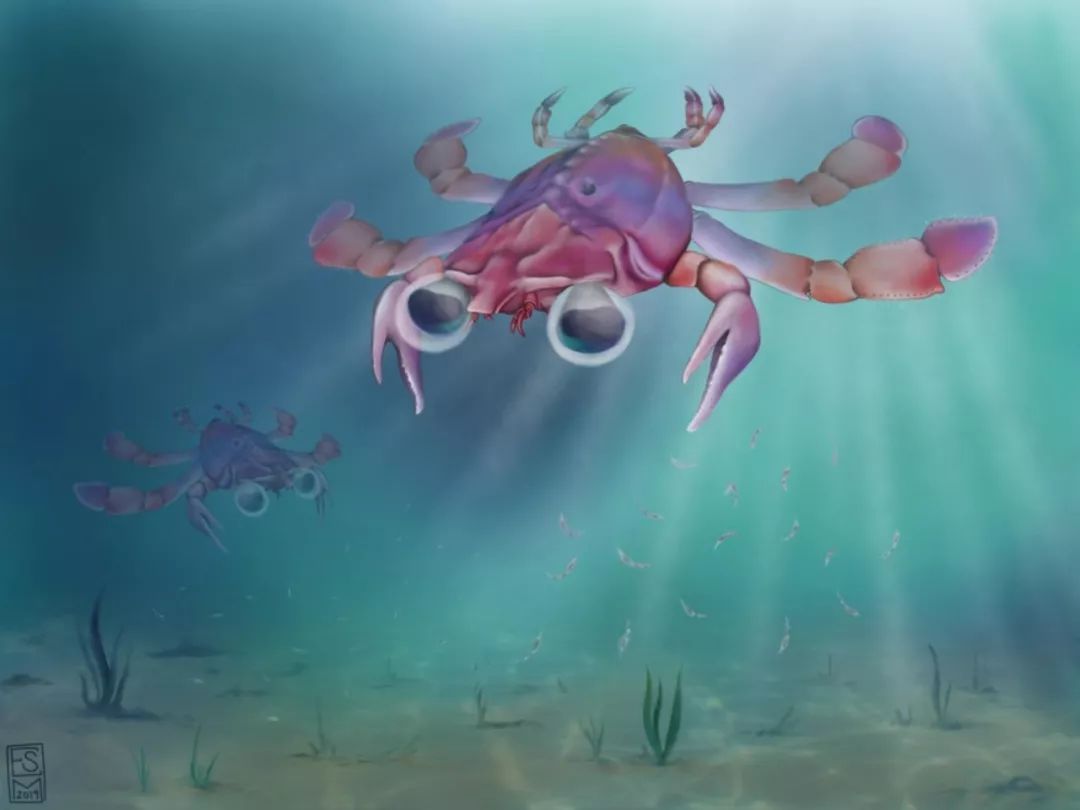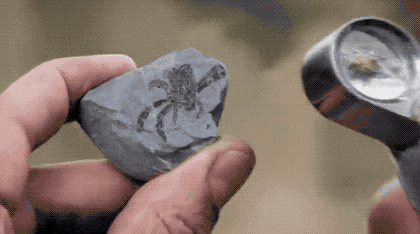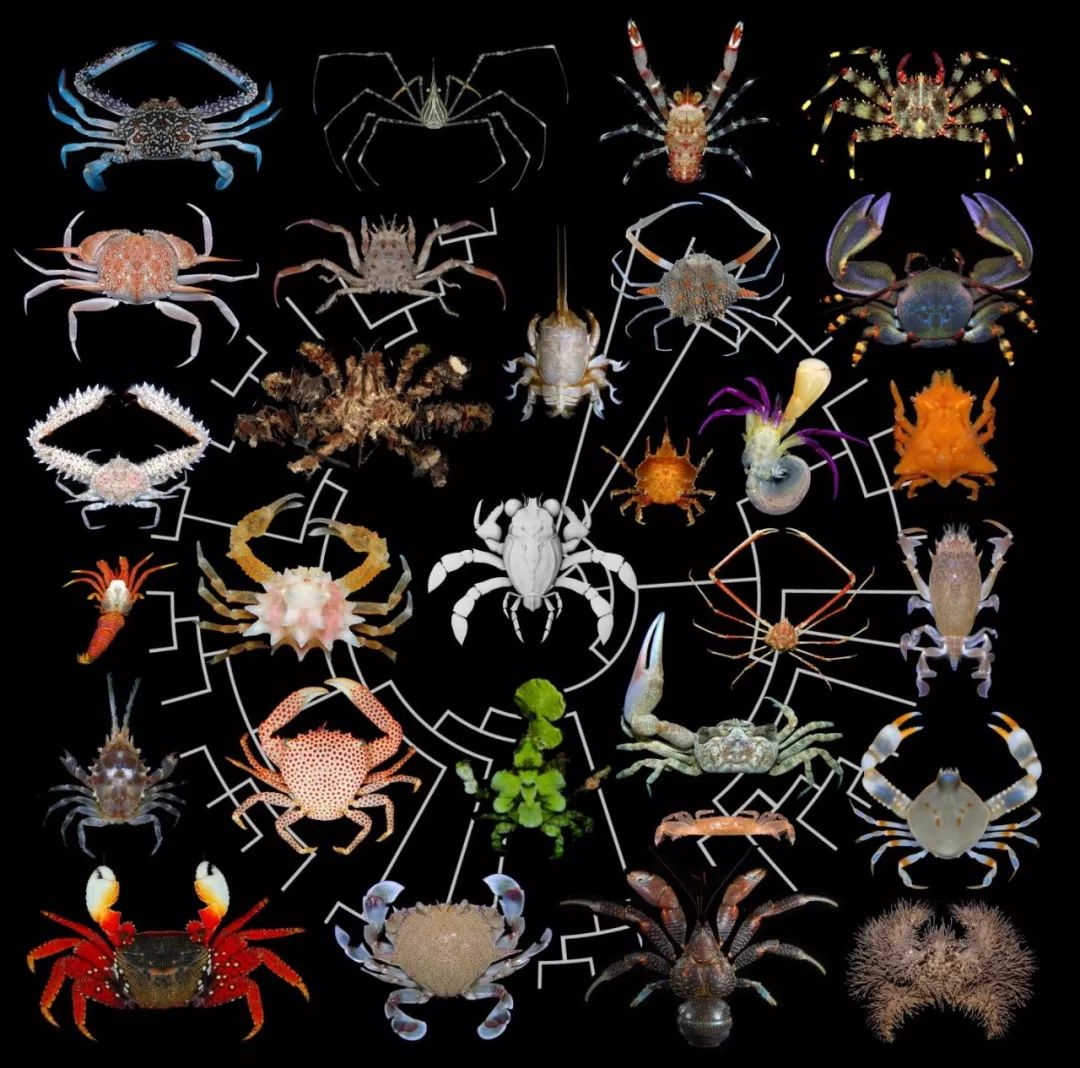![]()
一个国际研究团队发现了这个奇特的“四不像”螃蟹化石,它融合了多种不同生物的外貌特征(描述起来实在令人词穷),因而被命名为 “令人困惑的美丽的喀迈拉”。它很可能在演化中占据着独特而重要的地位。
![]()
Callichimaera perplexa 复原效果图。图片来源:Elissa Martin, Yale Peabody Museum of Natural History
来源 Yale University
翻译 胡琦琳
审校 严冰冰
编辑 戚译引
螃蟹家族刚刚有了一群新的表亲,其中包括一个有 9500 万年历史的“嵌合体”,它将迫使科学家们重新思考螃蟹的定义。
由耶鲁大学古生物学家 Javier Luque 领导的国际研究小组宣布,他们在哥伦比亚和美国发现了数百个保存异常完好的化石标本。这些标本可追溯到 9000~9500 万年前的白垩纪中期,其中保存了数百只微小的涟虫目(Cumacea)、几只虾类,以及进化树上一个螃蟹的全新分支。
据研究人员介绍,其中最有趣的发现是 Callichimaera perplexa,它是自超过 2.5 亿年前广翅鲎灭绝后,最早用桨状腿游泳的节肢动物。这个名字来源于古希腊神话中的喀迈拉(chimera),一头拥有多种动物身体特征的神兽。它的全名意为 “令人困惑的美丽的喀迈拉”。
Luque 指出,Callichimaera 有一副“不寻常又可爱”的外表——它只有硬币大小,有着不带眼眶的大复眼、弯曲的钳爪、足状的口部、裸露的尾巴和长长的身体,这些都是典型的远洋蟹幼体的特征。这表明“喀迈拉”身上的某些幼体特征可能通过发育时机和速度的改变,而在成体中得到了保留和放大。该过程被称为异时发生(heterochrony),可能会演化出新的躯体构建(body plan)。
![]()
图片来源:Daniel Ocampo R., Vencejo Films, & Javier Luque, Yale University; 动画及3D重建:Alex Duque
“Callichimaera perplexa 是如此的与众不同,就像是螃蟹世界中的鸭嘴兽,”Luque 说,“它向我们揭示了新的结构如何演化,又怎样随着时间推移而产生巨大差异。我们通常认为螃蟹体型较大,有宽阔的甲壳、强壮的钳爪、长眼柄、小眼睛、身体底下藏着的小尾巴。而 Callichimaera 打破了所有‘螃蟹特征’的局限,让我们不得不重新思考该如何定义螃蟹。”
该研究发表在 4 月 24 日的 Science Advances 期刊网络版上。
Luque 说:“激动人心的是,我们如今还能找到生命之树上来自遥远过去的全新分支,尤其是来自热带地区——作为生物多样性的热点区域,我们对它的过去知之甚少。”
![]()
形态千奇百怪的螃蟹,图片中央为本次发现的 Callichimaera perplexa。图片来源:Arthur Anker & Javier Luque; figure, Javier Luque, Yale University
本文来自微信公众号“科研圈”。如需转载,请在“科研圈”后台回复“转载”,或通过公众号菜单与我们取得联系。原始文章请点击“阅读原文”。
![]()
论文信息
【标题】Exceptional preservation of mid-Cretaceous marine arthropods and the evolution of novel forms via heterochrony
【作者】J. Luque, R. M. Feldmann, O. Vernygora, C. E. Schweitzer, C. B. Cameron, K. A. Kerr, F. J. Vega, A. Duque, M. Strange, A. R. Palmer and C. Jaramillo
【期刊】Science Advances
【时间】24 Apr 2019
【DOI】10.1126/sciadv.aav3875
【链接】https://advances.sciencemag.org/content/5/4/eaav3875
【摘要】Evolutionary origins of novel forms are often obscure because early and transitional fossils tend to be rare, poorly preserved, or lack proper phylogenetic contexts. We describe a new, exceptionally preserved enigmatic crab from the mid-Cretaceous of Colombia and the United States, whose completeness illuminates the early disparity of the group and the origins of novel forms. Its large and unprotected compound eyes, small fusiform body, and leg-like mouthparts suggest larval trait retention into adulthood via heterochronic development (pedomorphosis), while its large oar-like legs represent the earliest known adaptations in crabs for active swimming. Our phylogenetic analyses, including representatives of all major lineages of fossil and extant crabs, challenge conventional views of their evolution by revealing multiple convergent losses of a typical “crab-like” body plan since the Early Cretaceous. These parallel morphological transformations may be associated with repeated invasions of novel environments, including the pelagic/necto-benthic zone in this pedomorphic chimera crab.
阅读论文解读及推荐
![]()
![]()
▽ 精彩回顾 ▽
![]()
![]()














